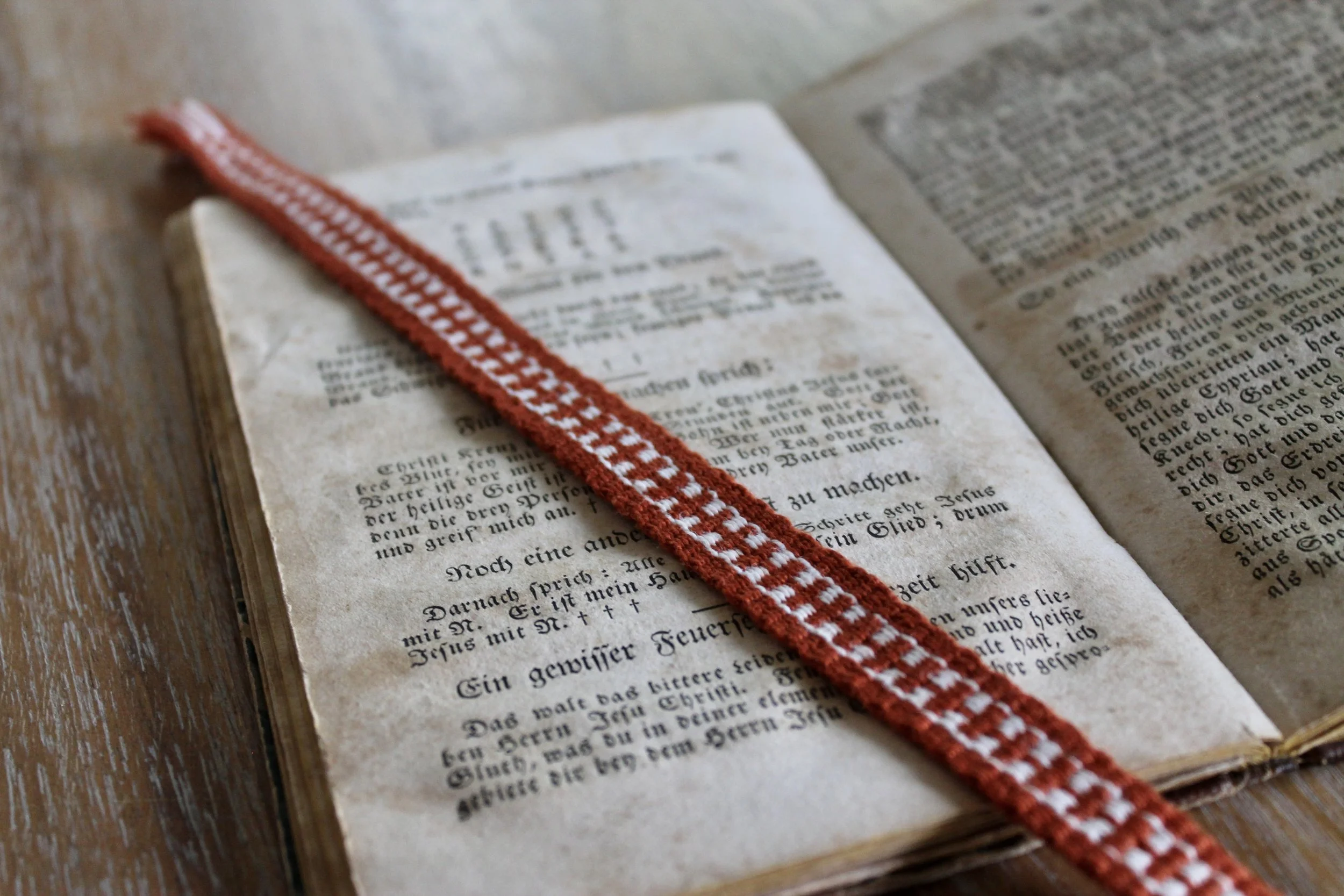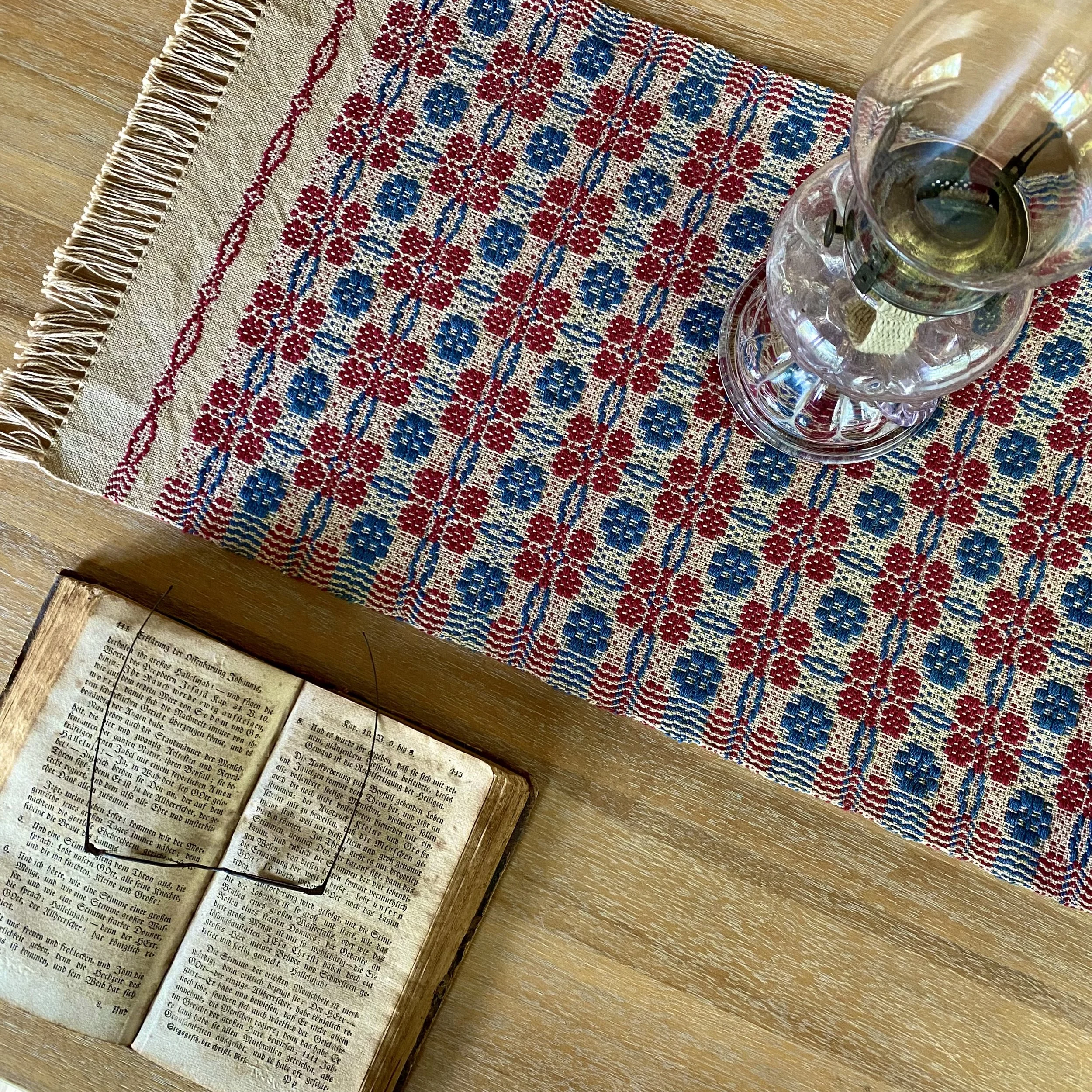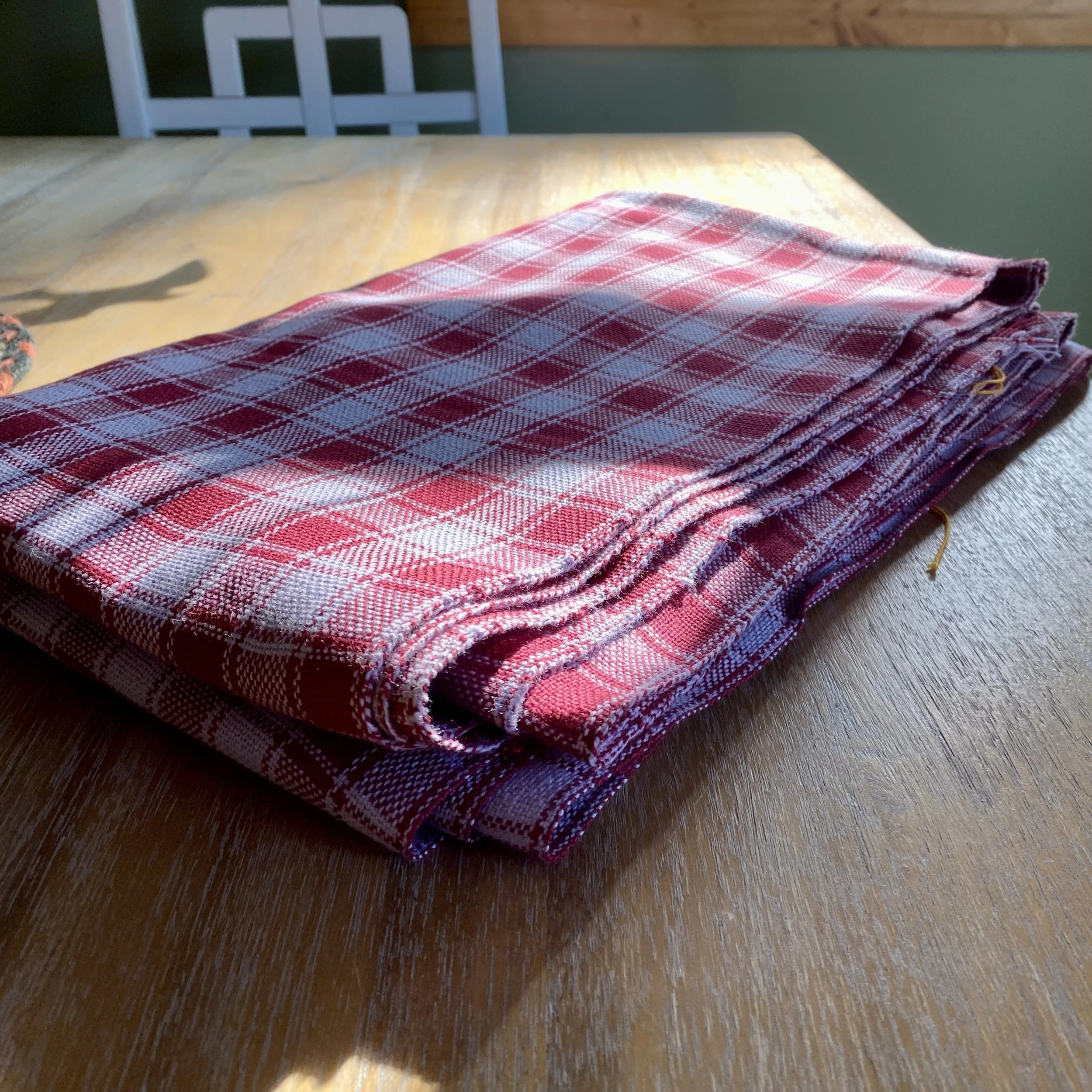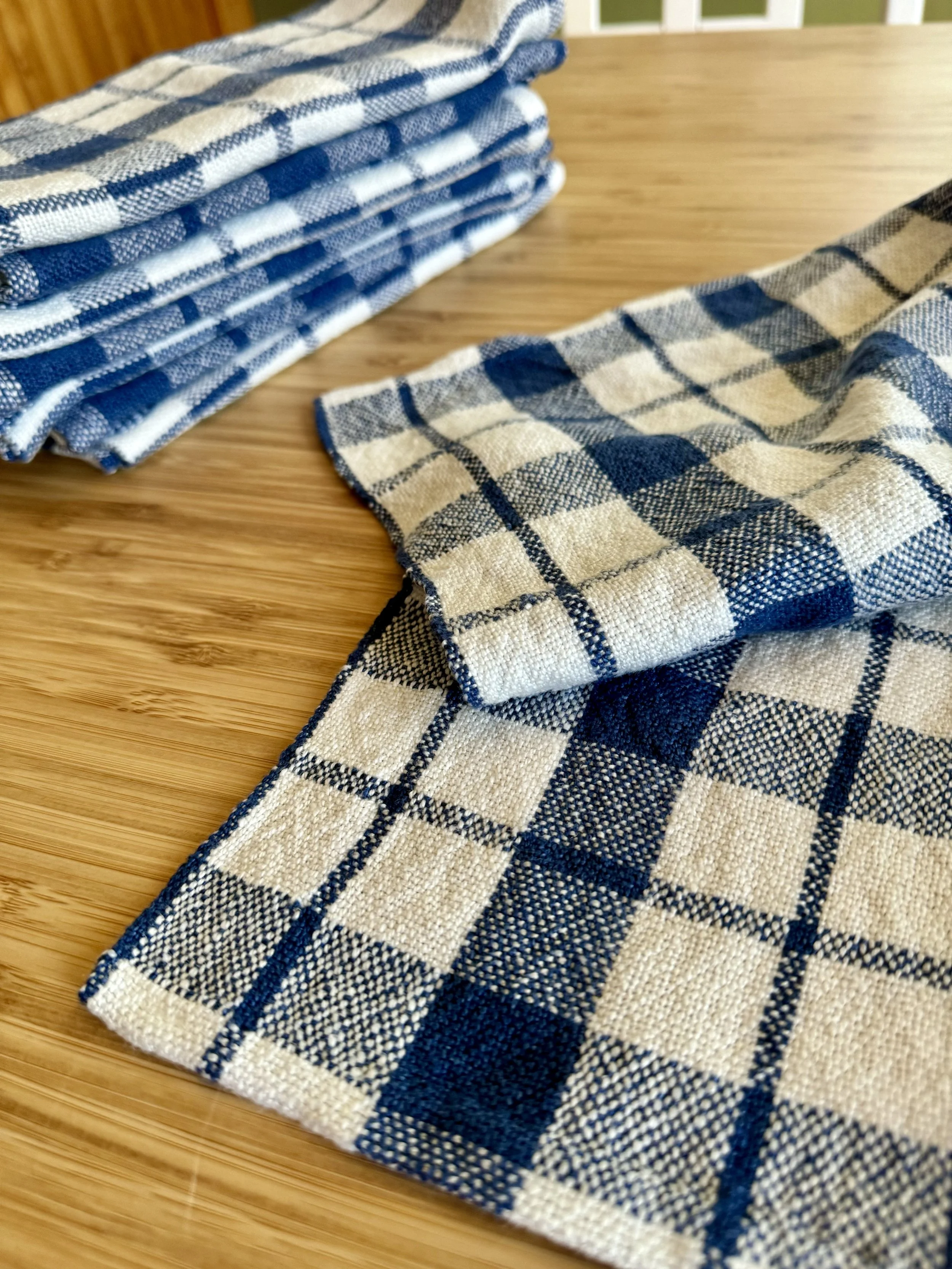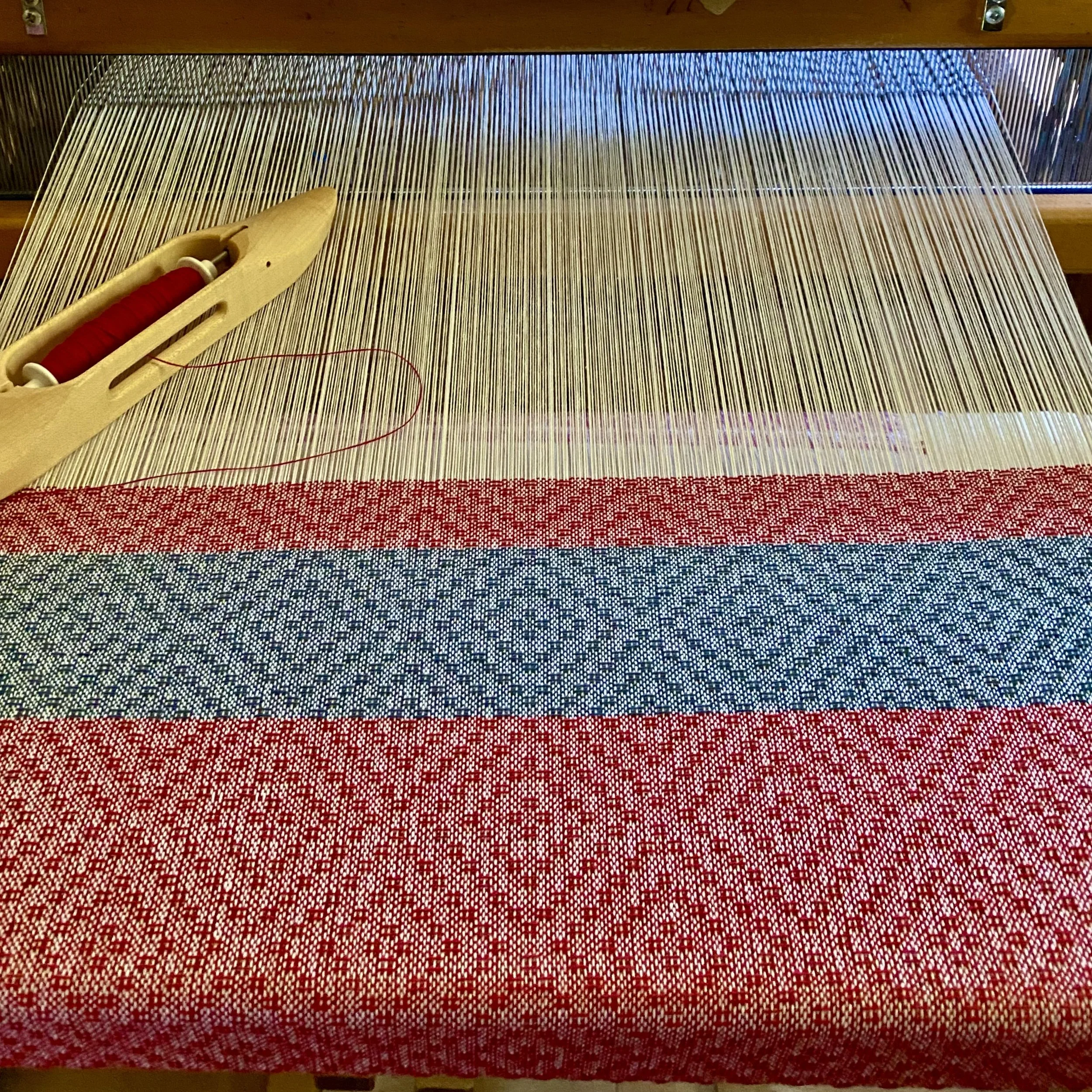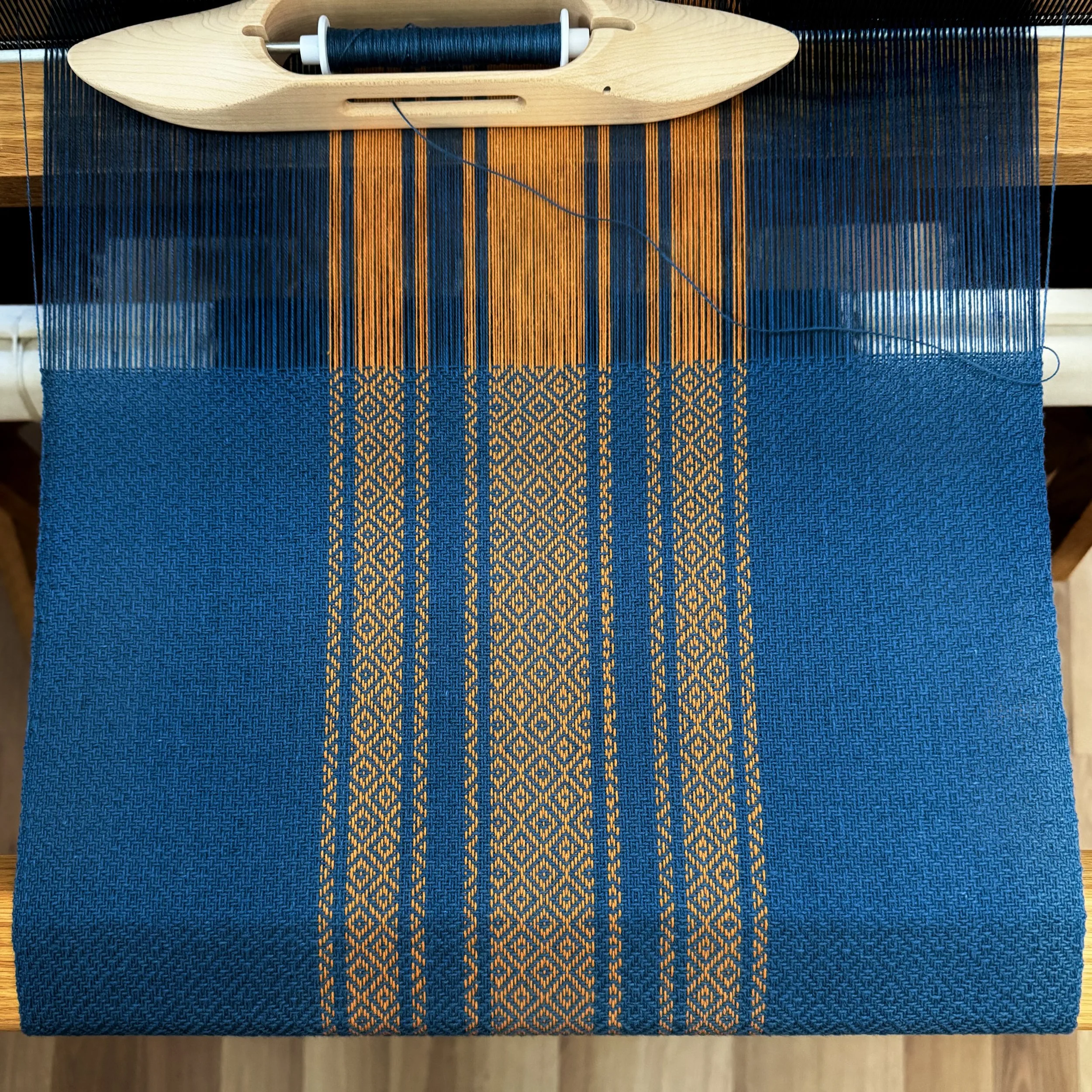-
Bendel bookmark
Bendel ‘handwoven tape, bands’ were narrow bands that were woven in homes on small looms. Handwoven tape had a variety of functions as apron strings, stocking garters, and general-purpose ties.
-
![]()
Blummebett
This textile is based on a pattern titled Bild Num. 14 (picture number 14) from John Landes's late 18th century weaving pattern book. John Landes was an itinerant weaver who travelled from home to home in the Pennsylvania Dutch country, showing his pattern book to discerning clients who needed coverlets for their beds. His weaving pattern book is now housed at the Philadelphia Museum of Art.
A Blummebett is Pennsylvania Dutch for 'flower bed'. The pattern has large blue roses enclosed and circled by four small red roses.
-
![]()
Eckleit
This textile is based on a blue and white linen bolster cover that is housed at the Goschenhoppen Historians in Green Lane, Montgomery County, Pennsylvania. The original is dated 1840-1860 and is in a traditional dobbelstein (plaid or check) pattern. The Eckleit are fairies that inhabit the corners of fields and gardens. Traditionally, the Pennsylvania Dutch would not plant in field corners so that wildflowers could grow there, keeping the Eckleit happy.
-
![]()
St. Getrude
This textile is based on a blue and white linen towel that is housed at the Schwenkfelder Library, Pennsburg, Montgomery County, Pennsylvania. The original is dated to the 19th century and is in a traditional dobbelstein (plaid or check) pattern. St. Gertrude was an important figure in Pennsylvania Dutch folklife. On St. Gertrude’s Day, March 17, the Pennsylvania Dutch plant onions, peas, and potatoes and sprinkle the garden’s corners with crumbs from a special bread called a datsch to bless the soil.
-
![]()
Kutztown
The overshot design is found in an old manuscript supposedly written in Kutztown, Berks County.
-
![]()
Fischer's
The design of this textile is one that has come in a tablecloth passed down through the Fischer family of the Oley Valley, Berks County.
-
![]()
ausgeneht Handduch
The ausgeneht Handduch ‘decorated towel’ hung on the back of the kitchen door into the parlor in old Pennsylvania Dutch farmhomes.
-
![]()
Aunt Betsy
This textile is based on a diamond patterned tablecloth owned by the Keim family who lived in an isolated part of the Oley Valley, Berks County, Pennsylvania. Their home built in 1753 with its clay tiled roof and large cooking hearth retained tradition just as its Pennsylvania Dutch inhabitants did. Betsy Keim, the last of five spinster sisters, was the final resident of the home when she died in 1911. Her estate included nearly 100 handwoven table linens and, if the legends are correct, her eccentric ghost still lingers there today.
Next
Next

